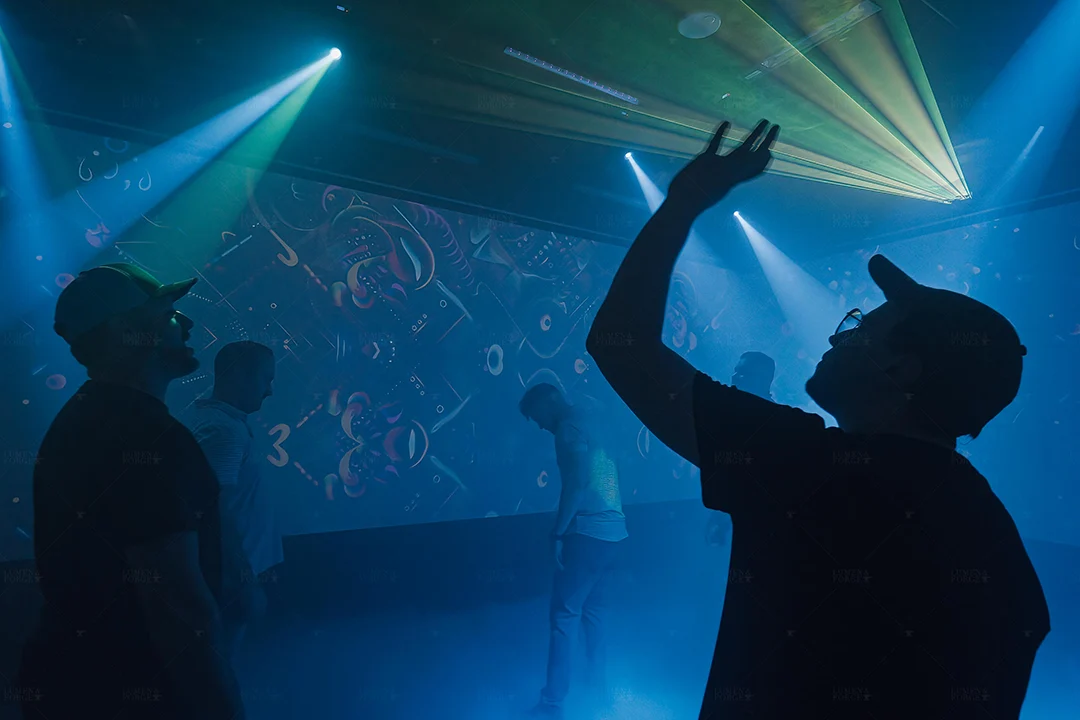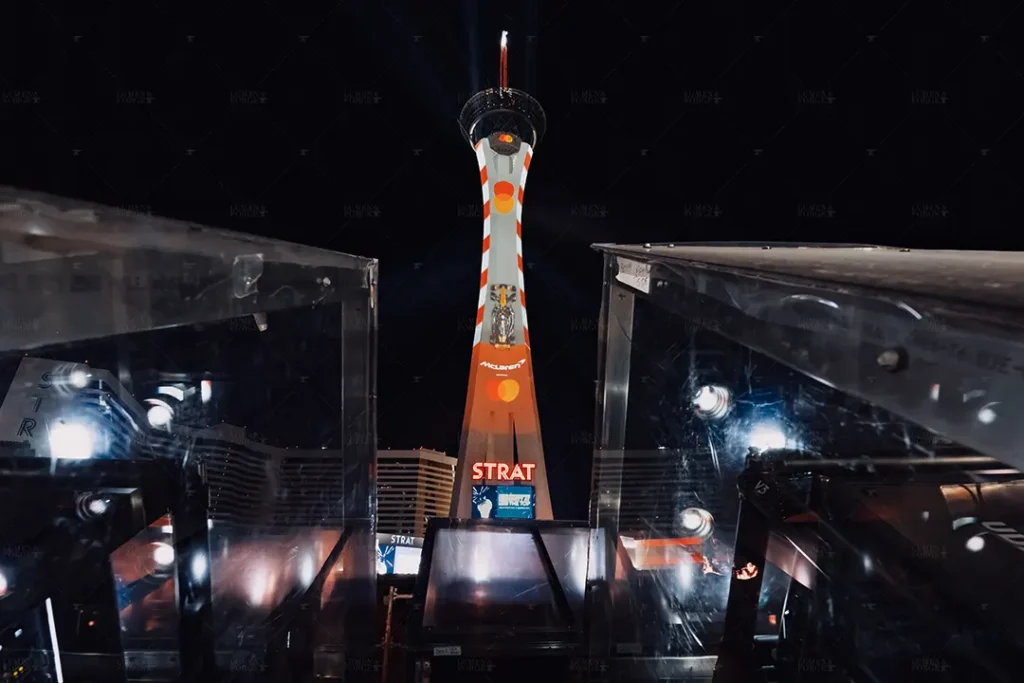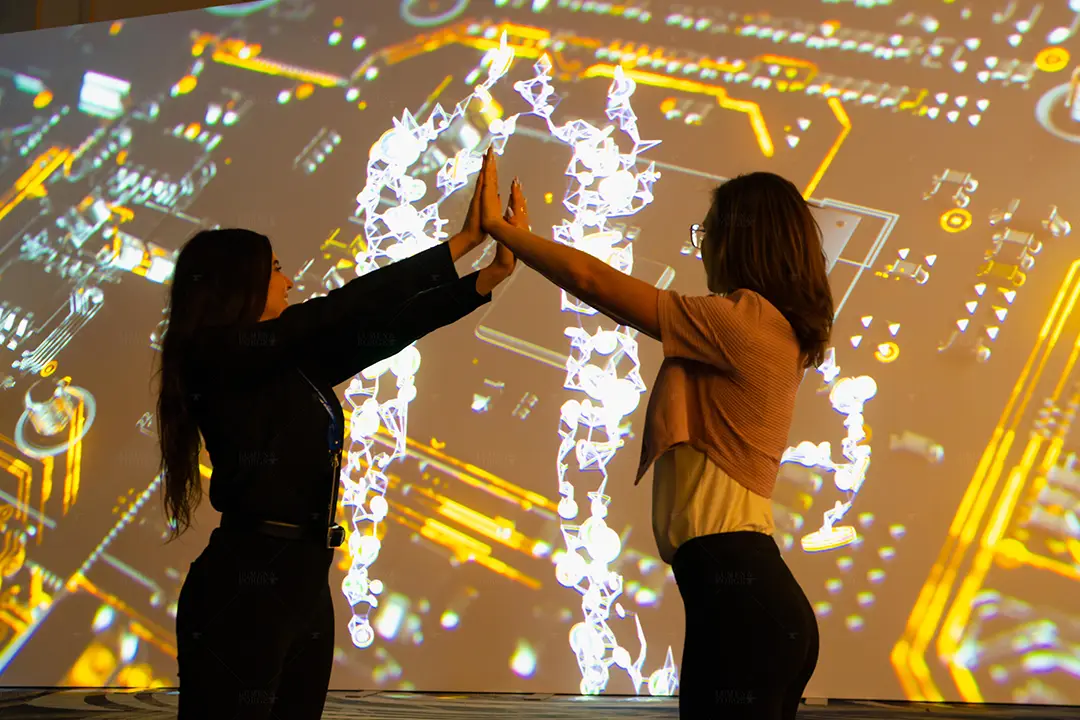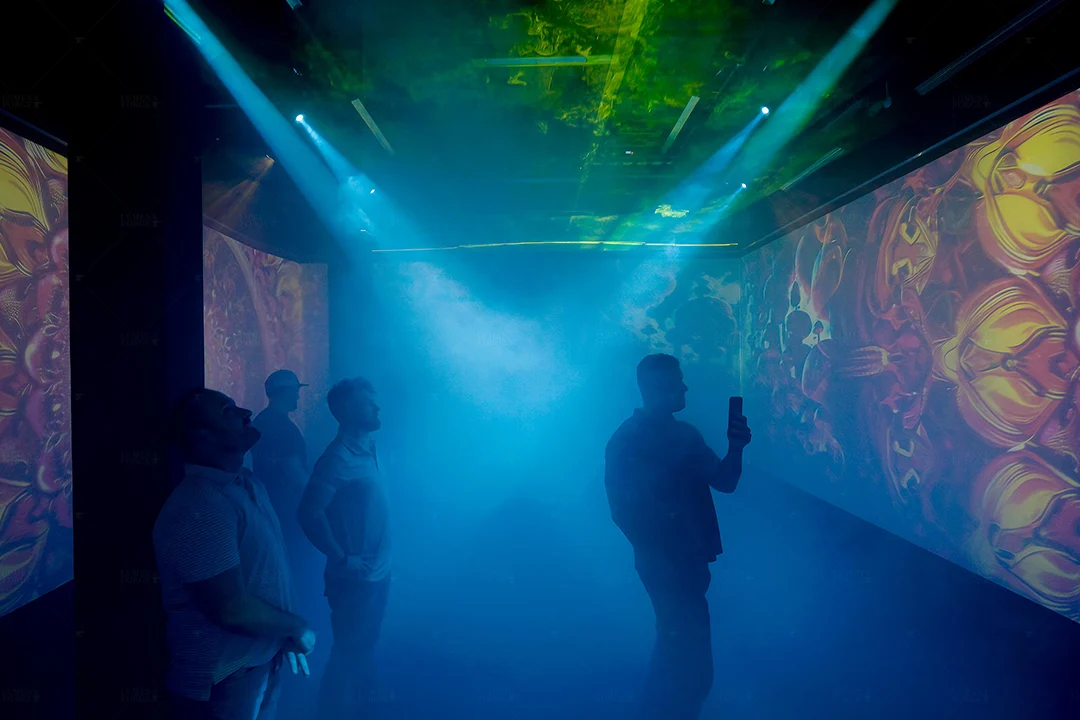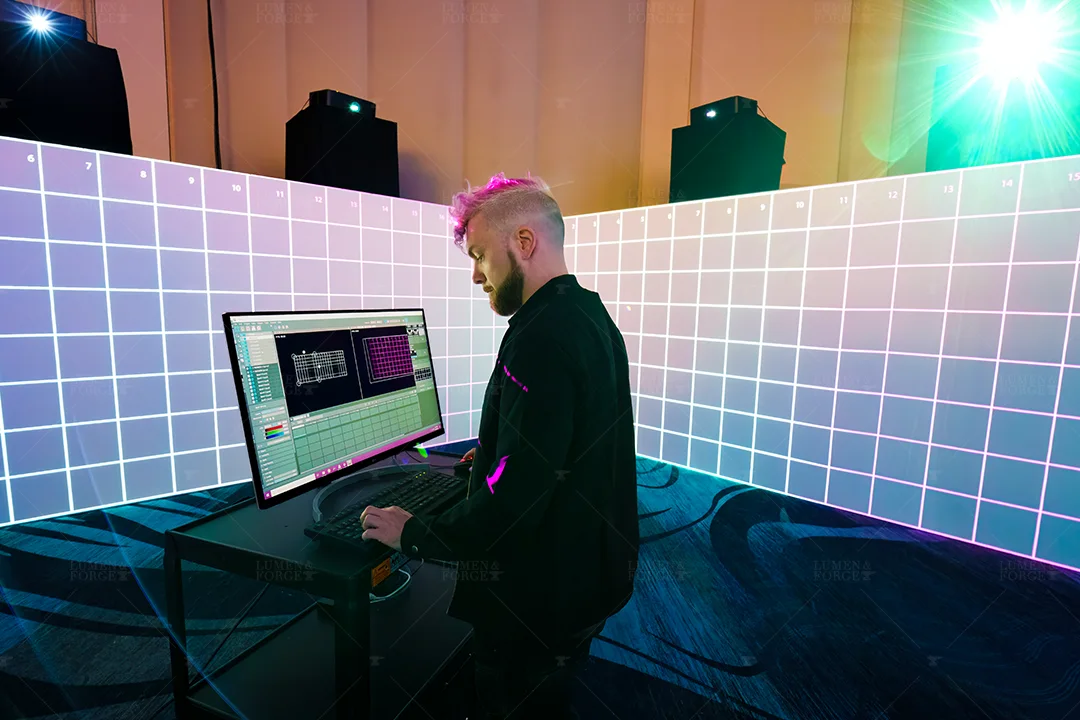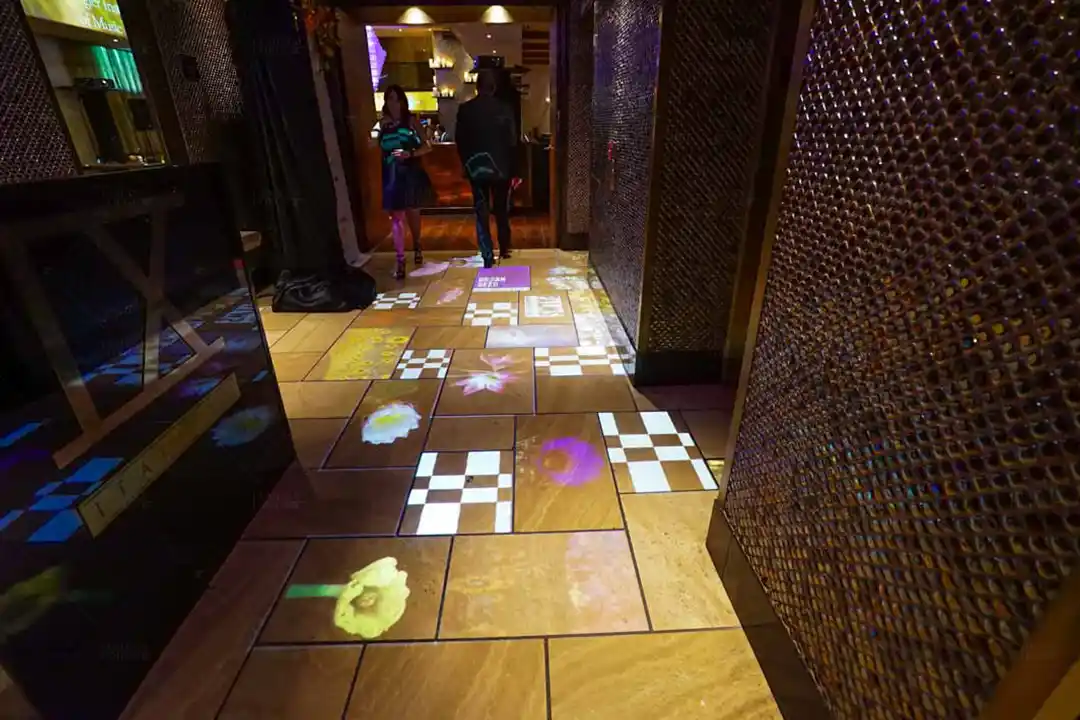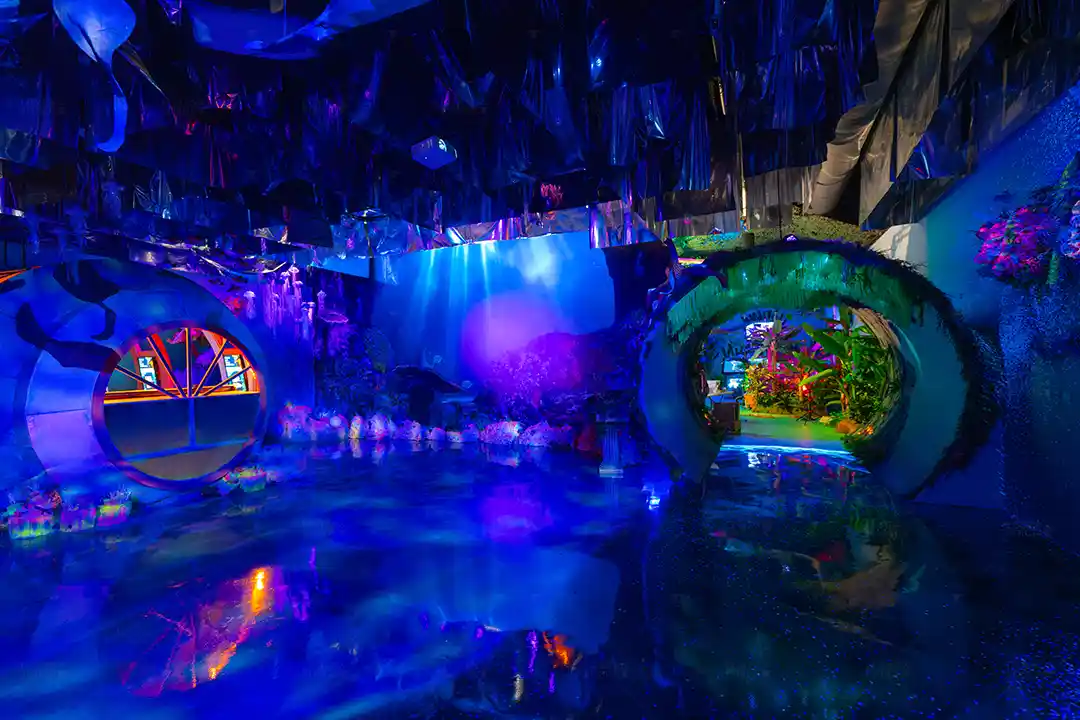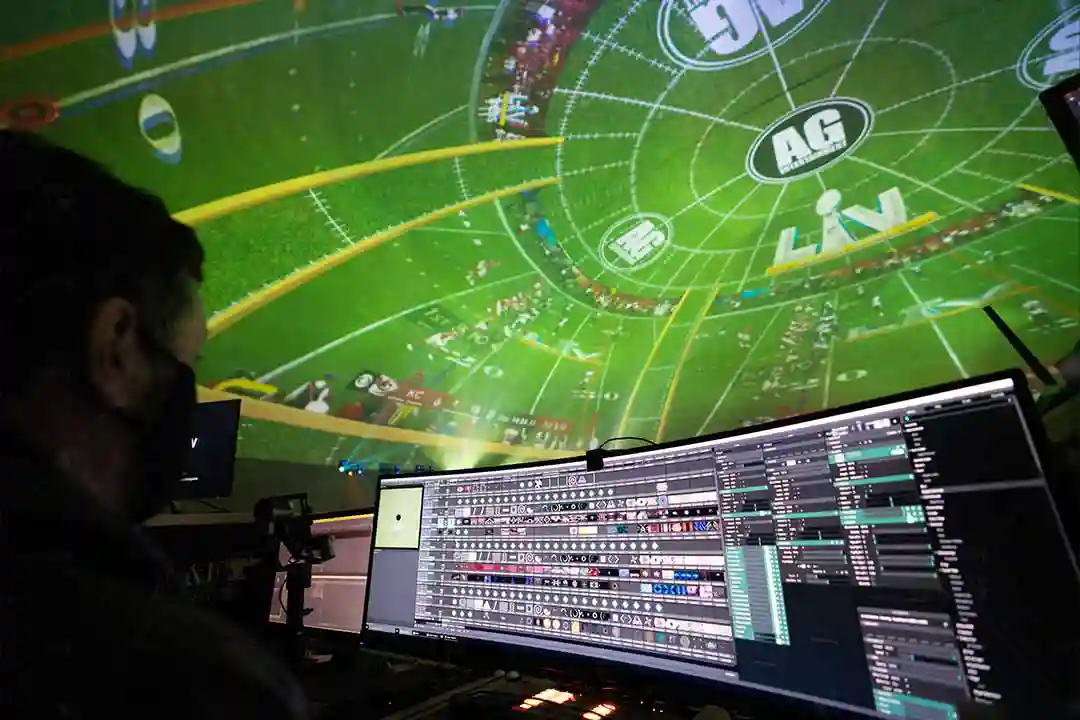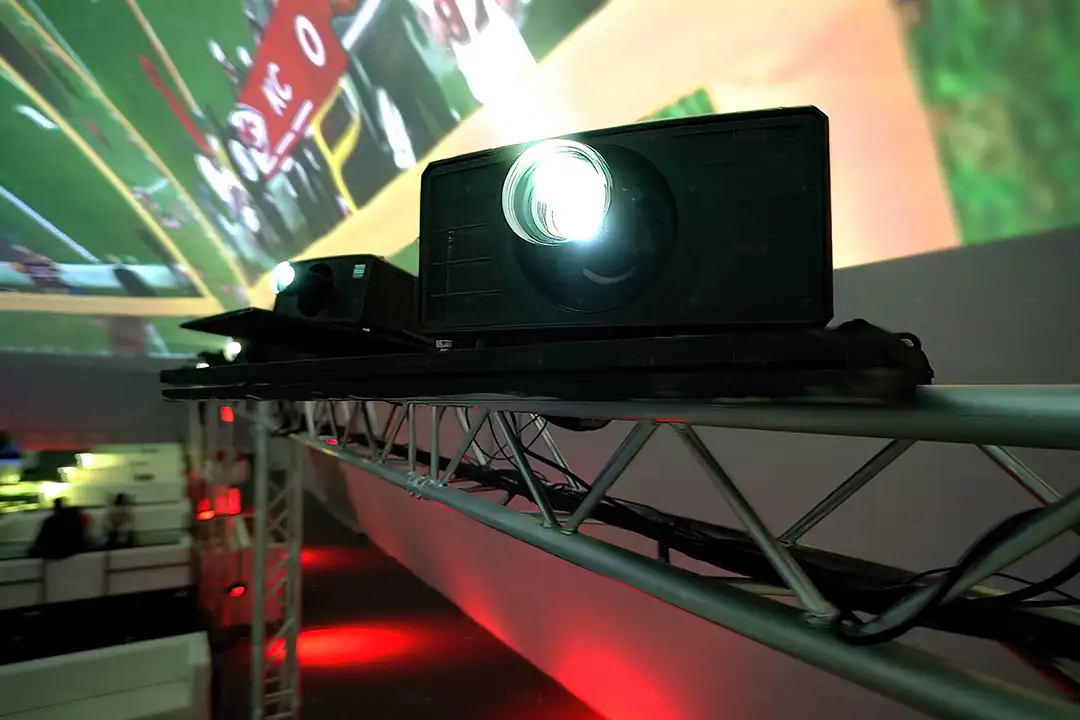It’s pretty uncommon to find a modern-day business that doesn’t make use of some sort of LED screen to help market their products and services. This can range from a simple flat-screen display to an entire wall of LED panels. LED technology isn’t going anywhere, but there has been a gradual increase in the use of projection systems in business environments, particularly as a means of temporary experiential marketing.
Rather than make this a contest of which one is better, we plan to highlight the unique traits of both so you have a better understanding of when and how to implement each. In this article, we’re going to dive into the benefits, drawbacks, and best use cases of LED vs projection.
Factors to Consider When Comparing LED to Projection
Brightness
Brightness is fairly self-explanatory, but the way that brightness is measured for LED displays vs projection systems is different. LED displays are measured in nits (cd/m²), which measures luminance, as LEDs display imagery by emitting light directly. Projectors are measured in lumens (luminous flux), which focuses on how much visible light is emitted from the projector, as the imagery relies on reflected light.
Because they’re two different units of measurement, it can be hard to compare them. Furthermore, each type of display technology has unique upsides and downsides based on the environment they’re in. Therefore, we’ll go into more detail further in the article.
Contrast Ratio
Contrast refers to the difference between the brightest point (white) to the darkest point (black). This measures how well a display can accurately replicate the light and dark tones of the media that’s being played. Put simply: higher contrast ratios allow for playback that’s closer to the original, especially in dark scenes like nighttime footage or shadow-rich visuals.
Resolutions and Image Quality
Resolution refers to the number of pixels in a display, measured in width x height. One of the most common resolutions used today is 1920 x 1080, which is full HD. Then, you have 4K UHD (4096 x 2160) and 8K UHD (7680 x 4320). It goes even higher, but the point is that a higher-resolution picture has a direct effect on the image quality. At higher resolutions, the visuals will be sharper and more detailed, even at close viewing distances. Contrarily, low-resolution footage will look pixelated and blurry, especially when displayed on large-scale screens.
National Geographic Underwater 360 Museum
Power Consumption
Cost Considerations
As a business, costs are always something at the forefront of decision-making. Ultimately, your needs will come down to what your goals are, short-term and long-term. Beyond just the initial purchase cost, you must consider ongoing expenses like maintenance, power consumption, and potential upgrades. These all impact the Total Cost of Ownership (TCO).
LED Displays (Panels, Walls, etc.)
LED stands for Light Emitting Diode. LED displays contain an array of tiny LEDs that emit light, each acting as a pixel. These LEDs have RGB (red, green, blue) diodes that combine to use the full-color spectrum. The Sphere in Nevada, US is a good example to use for visualizing this. When you’re at a distance, you can see an entire picture being displayed. But up close, you can see the individual LED lights that make up the image. The same concept applies to LED monitors, panels, walls, etc. If you go up close, you’ll see the individual pixels.
As LED displays emit light directly, they work well in light and dark environments. Their brightness allows them to maintain vivid, high-contrast visuals even if there is a lot of ambient light. LEDs also offer great contrast ratios, often exceeding 100,000:1. This is because each individual pixel can be turned off to produce true black. This also makes them ideal for handling high dynamic range (HDR) content with greater accuracy. Additionally, their long lifespan and minimal maintenance make them a good long-term investment despite their high initial costs.
All this considered, LED displays are best used in permanent displays. Shop signage, LED wall panels, and above-counter menu fixtures – their versatility makes them a popular choice for any environment. But, because they’re very cumbersome to transport (especially large displays), projectors are the better option for temporary events.
LED Display Benefits
Superior contrast ratio – The ability to turn off specific pixels/LEDs gives them the edge in terms of contrast ratio, making them ideal for viewing in environments with lots of ambient light.
Durability and long lifespan – LED displays are very durable and last a long time, resulting in a favorable TCO.
Easier to configure – Basic LED displays like TVs and monitors are very easy to set up, whereas projectors have a bit of a learning curve.
LED Display Drawbacks
Not portable – LED displays are less practical for temporary events or setups because they’re heavy and difficult to transport. These frustrations are further compounded by larger displays.
Higher upfront cost – LEDs will only have a favorable TCO over time if you know (a) how they will be implemented, and (b) how to maintain them yourself. Otherwise, you must also consider the costs of maintenance, storage, and usage.
Limited scalability – Large displays best suited for auditoriums or large event spaces will come with unique challenges when it comes time to expand. If you ever need to swap out a display, the process is much more complicated compared to projectors.
Highlights Video of L&F's Super Bowl Streaming Event in Atlanta
Projection Systems
Projection Mapping Highlights 2024 | Lumen and Forge
Projection System Advantages
Excellent scalability – Large-scale visuals are much easier to achieve with projection systems. To make an image bigger, you can simply move the projector or add additional projectors to increase the scale while maintaining quality.
Better portability – Rather than go through the trouble of having to transport, set up, and then take down a large LED display, a projector is much less cumbersome to move around. And, a screen isn’t always necessary as you can project directly onto any surface.
Versatile applications – For irregularly shaped rooms, you can use projection mapping to make the picture conform to the layout of the room. Rather than use a large LED screen to block off that portion of the room, you can make use of it visually without taking up any more floor space.
Projection System Drawbacks
Lower contrast ratio – Because projectors rely on reflected light, it’s not possible for them to match the same black levels as LED displays.
Higher maintenance requirements – In cases where you want to own the projection system yourself, regular lamp replacements, filter cleaning, and alignment adjustments can result in higher costs over time.
Requires ideal lighting – Projectors are best used in controlled environments where you can reduce the amount of ambient light to avoid washing out the projected image.
Choosing the Right Display Technology for Your Needs
When planning your next event or marketing campaign, choosing the right display technology is essential to cultivate the perfect atmosphere that can deliver your brand’s message effectively. As we’ve seen, both LED displays and projection systems offer unique advantages and disadvantages.
LED is best for long-term use in a permanent location, whereas projection is best used for temporary activations where you really want to wow visitors. In all fairness, though, you don’t necessarily have to choose one or the other – you can actually utilize both. Lumen & Forge can help you plan and execute an event of any size for your brand or business, offering a range of creative solutions like custom content production, 360-degree dome projection, and fine-tuned projection mapping. Get in touch to learn more about how we can help you plan the perfect event.

FAQ
What is the difference between LED displays and projection systems?
There are several differences between LED displays and projection systems. The key differences to consider when choosing between the two are brightness, contrast ratio, resolution and image quality, power consumption, and overall cost. In summary, LED displays are brighter and best suited for permanent displays, whereas projection systems are much more portable, scalable, and better suited for temporary experiences.
Which display technology is better for bright environments?
LED displays are ideal for use in bright environments. For example, when comparing LED walls vs projection systems in a bright environment, the LED walls will appear brighter because they emit their own light.
What is the cost difference between LED displays and projection systems?
For the sake of brevity, LED displays typically come with a higher upfront cost but better long-term return, while projection systems are much cheaper upfront but come with more long-term costs, especially with maintenance.
